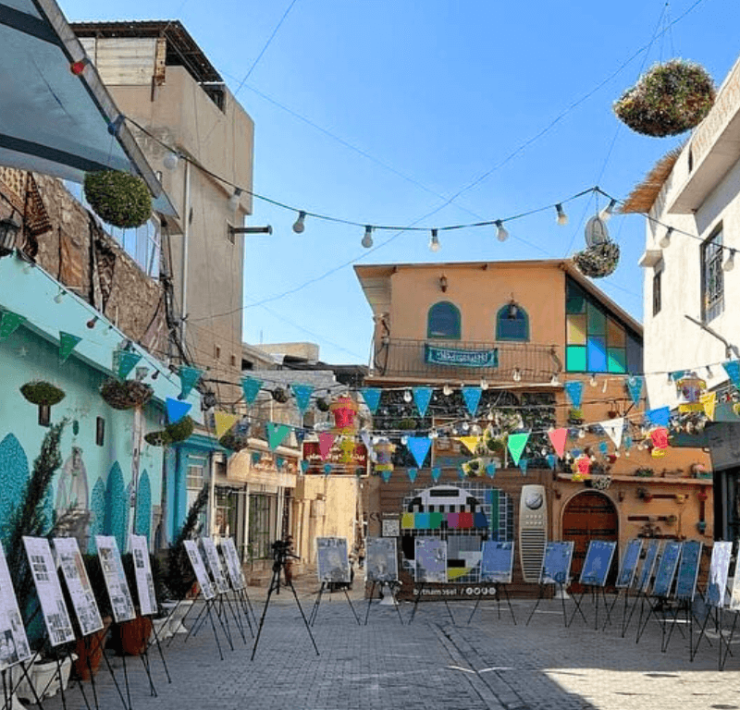Following in the footsteps of her mother, renowned tatreez artist Feryal Abbasi-Ghnaim, Wafa Ghnaim of Tatreez & Tea is on a mission to preserve and promote tatreez, proudly claiming this beautiful textile art form for Palestinians across the globe and encouraging new generations of embroiderers to practice this age-old art.
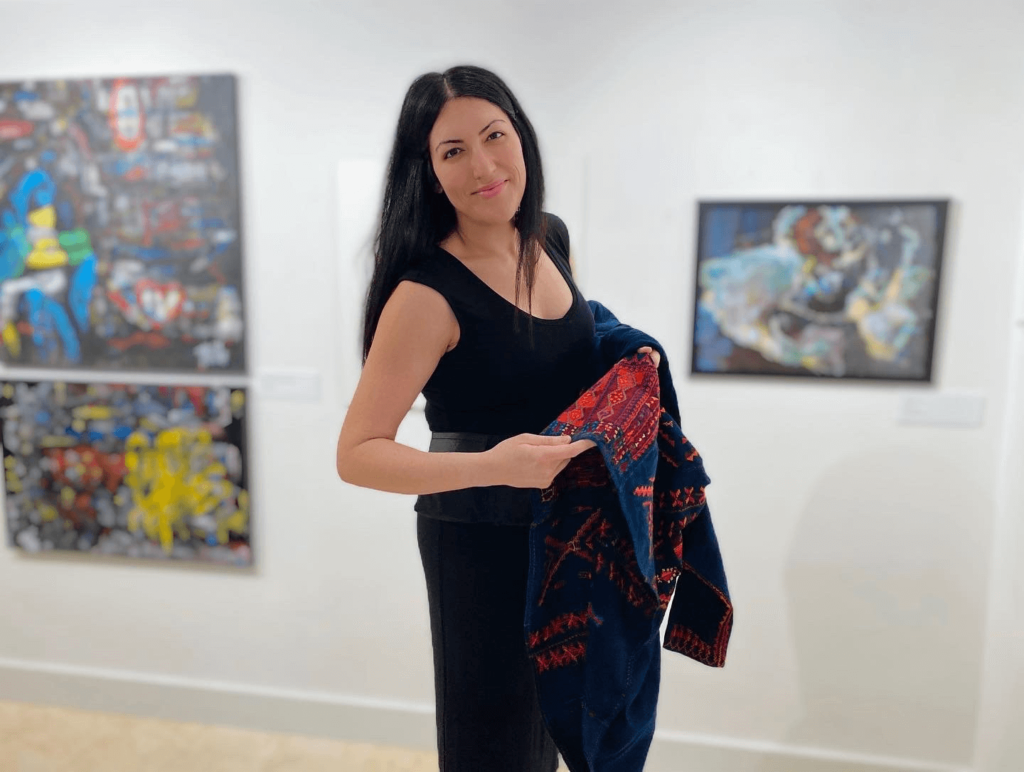
Tatreez, a form of Palestinian embroidery, is a textile art which consists of intricate geometric patterns made up of thousands of tiny cross stitches. It has been used to decorate thobes, the traditional dresses worn across parts of the Middle East, for thousands of years. A rich visual vocabulary developed over the centuries, using embroidered motifs to express the personal and local identity of the stitcher.
But tatreez is far more than just embroidery. Since the Nakba (which means catastrophe, referring to the mass displacement of hundreds of thousands of Palestinians by Israel in 1948), practising tatreez has become a powerful political act of resistance, and a potent symbol of Palestinian identity.
“… through Palestinian embroidery and its promotion, we keep a candle in the window…”
Leila el Khalidi (2000)
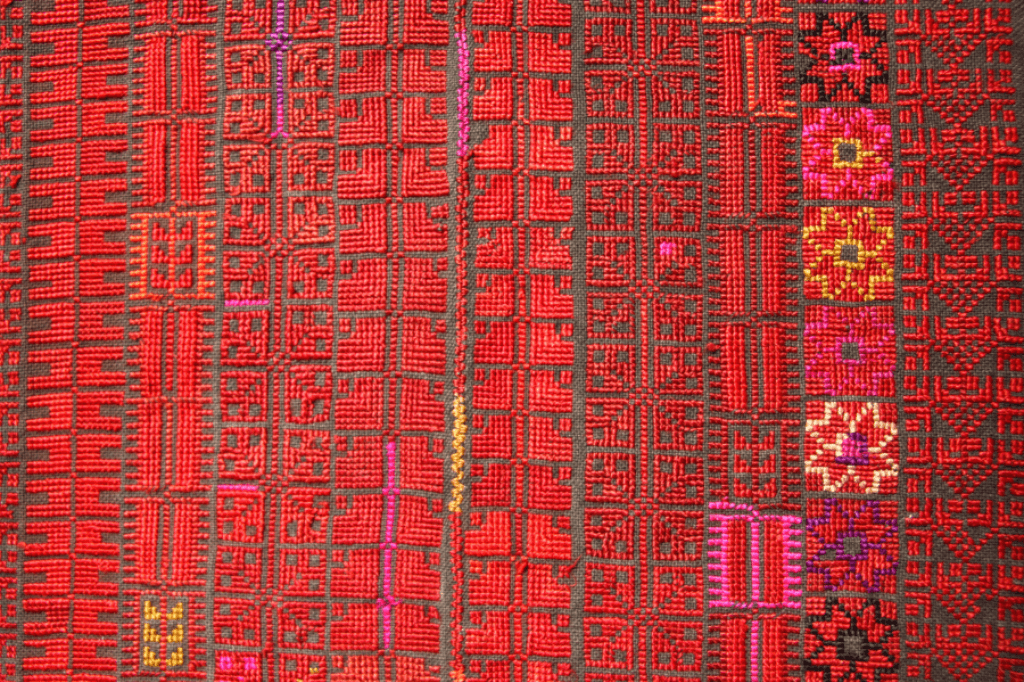
Because tatreez is endlessly adaptable while still retaining its distinctive and recognisable style, it has been used as a means of both self- and national expression. Its motifs are more than decoration, they’re highly symbolic, and can be created or adapted to tell new stories, from the dresses created during the Intifadas to modern pieces designed to assert the Palestinian identity of embroiderers now living in the diaspora.
Today, tatreez continues to provide a way for Palestinians across the world to connect with and display their identity and heritage, and to pass it on to the next generation. Tatreez is a practice of sumūd, the steadfastness practiced by Palestinians living under occupation or forced from their lands, using only a needle and thread. By continuing the tradition of tatreez, embroiderers resist dispossession, occupation and cultural erasure, and display their heritage proudly.
“Where our embroidery and our identity are one is a part of our resistance”
Wafa Ghnaim
As the daughter of a celebrated tatreez artist and educator, Wafa Ghnaim grew up immersed in the world of tatreez, learning to help with her mother’s projects when she was only a toddler and accompanying her mother to tatreez demonstrations, folk art festivals and lectures. Tatreez was ever-present in the household, a precious link to Palestine that Feryal carefully cultivated.
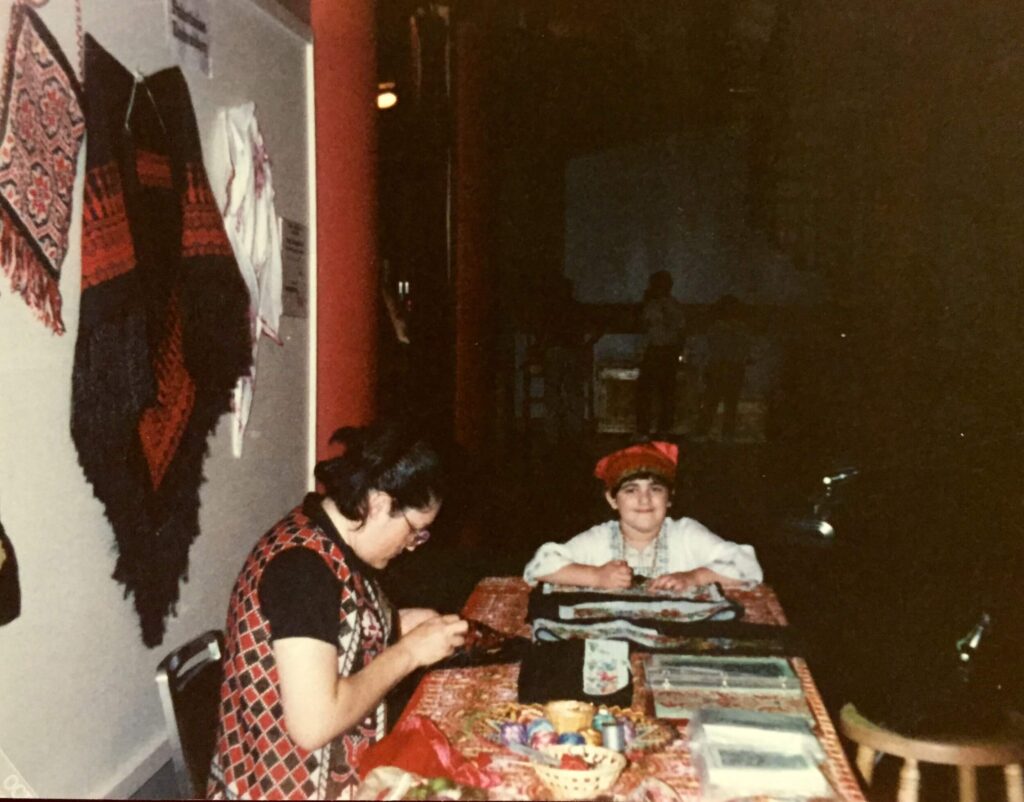
Born in Safad, a Palestinian village close to the Syrian border, Feryal’s family was forcibly expelled from Palestine during the Nakba when she was a young girl. She then lived in Syria and Jordan before settling in the United States, taking the skill of tatreez with her wherever she went. Despite the challenge of openly identifying as Palestinian in the US, Feryal began teaching tatreez at local women’s groups – the start of a stellar career in tatreez which would lead to multiple awards and her work being exhibited at the United Nations’ 1985 World Conference on Women.
For Wafa, tatreez wasn’t just a skill passed down from her mother and grandmother – as a Palestinian living in the diaspora, tatreez was both a means to cultivate a connection with her heritage and ancestry and a powerful practice of resistance. It would prove to be her life’s calling.
“Practicing Palestinian embroidery and studying it helps me connect with my own identity, when everything around me is telling me that I’m wrong, that I have a made-up identity, that there was never a Palestine … my arts and culture tell me a really different story… I get to learn about my own history, where I come from, why I am the way I am”
Wafa Ghnaim
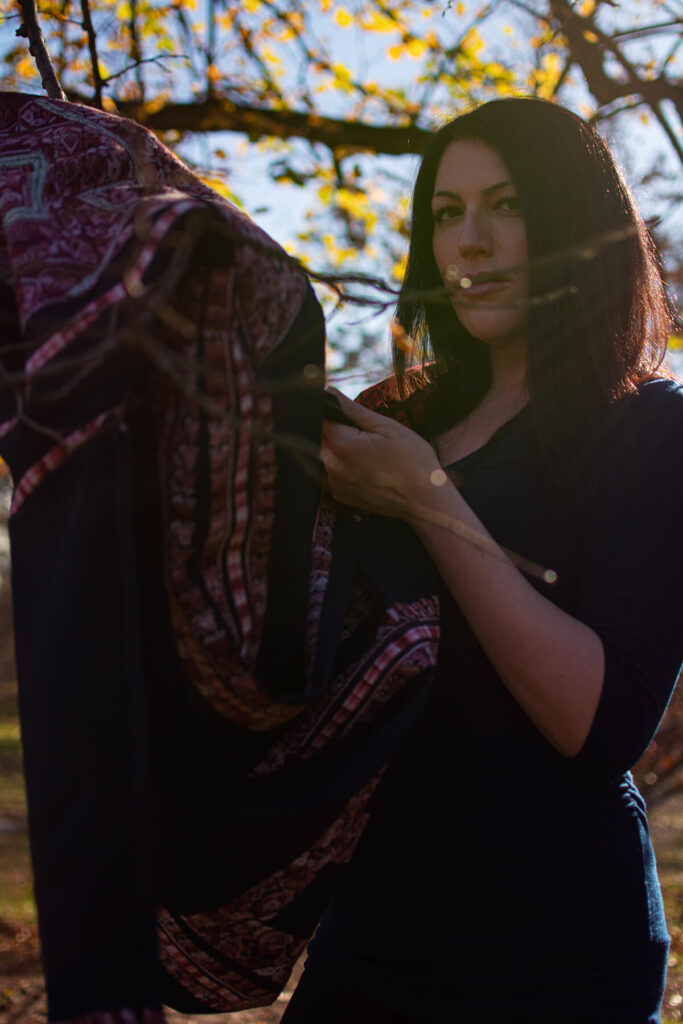
Today she tirelessly carries the torch for tatreez through her research, education programmes, books and activism work on social media. Now a world-leading expert on this textile art form, Wafa is not only an author and the founder of The Tatreez Institute, also known as Tatreez & Tea, but also the first-ever Tatreez Instructor at the Smithsonian Museum and Collections Specialist for the Museum of the Palestinian People.
She’s also busy researching her next book, conducting research at the Metropolitan Museum of Art. Not only that, she’s expanding her expertise into the history of embroidery in what is now Syria, spurred on by a deep personal interest in the traditional costumes and stitching techniques in the area of her maternal family lineage, along the border of present-day Syria.
Wafa poured her lifetime’s worth of knowledge about tatreez and her deep love of her Palestinian heritage into her first book, Tatreez & Tea: Embroidery and Storytelling in the Palestinian Diaspora. This treasure trove of a book isn’t just a collection of pattern charts, its pages hold generations of expertise, stories and Palestinian history and even recipes to enjoy while you stitch – Palestinian coffee, traditional preserves, and of course tea! From explanations of the origins and meanings of each motif and thread colour, to oral histories passed down through her family, each page of this book is a love letter to tatreez, to Wafa’s ancestors, and to Palestine.
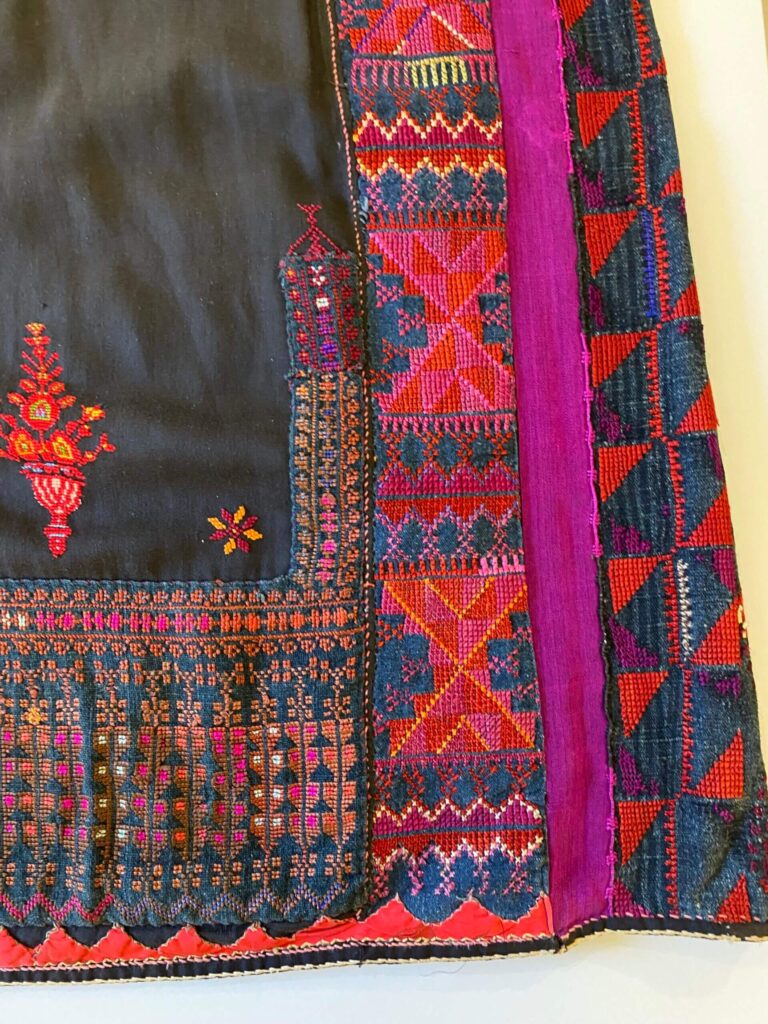
Through Tatreez & Tea, Wafa works to preserve tatreez for posterity, safe-guarding both existing pieces of tatreez and passing on the skills to new practitioners. Her work fights back against the erasure and appropriation of Palestinian arts and culture, and gives a new generation of Palestinian embroiderers the opportunity to experience tatreez’s powerful connection to their land and ancestry.
Another element of Wafa’s work is attempting to restore the stories of the tatreez pieces she studies. Often the spectacular thobes seen in museums and other collections carry no record of the women who designed, embroidered and wore them, bearing only the name of the person who purchased or donated the dresses. Countering this dispossession is a key goal of her second book, which aims to expand the Palestinian art historical record and reclaim the stories of the Palestinian women who created the beautiful thobes she studies.
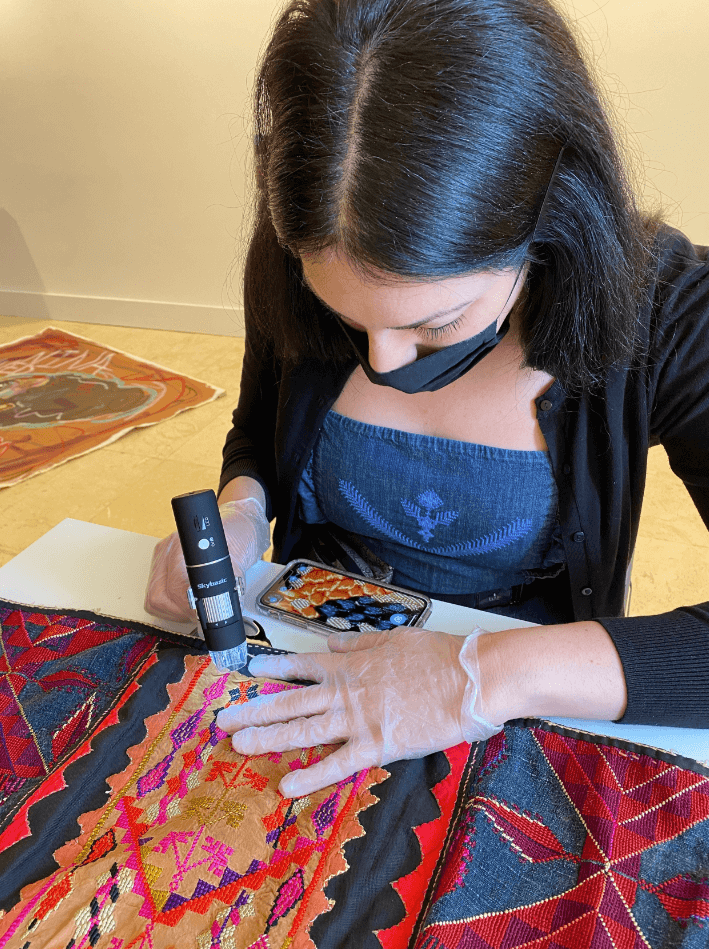
But Tatreez & Tea isn’t just about the books – it’s a living, thriving community of tatreez experts, enthusiasts and allies. Lovingly built as part of the Tatreez & Tea project, the website is a repository for all things tatreez, as well as forming the virtual centre of the tatreez community Wafa has created. In addition to advice on supplies, reading lists, a pattern shop and the Tatreezing blog, the website is also the place to sign up for one of Tatreez & Tea’s brilliant e-courses, lecture programmes or to join a virtual Stitching Collective, where you can join with other embroiderers in the Tatreez community to share and learn as you stitch. Wafa used tatreez as her touchstone as she built a home in the Palestinian diaspora, and now Tatreez & Tea holds space for others to do the same.
If you missed our live Qahwa Hour with Wafa, you can still watch the full interview on Instagram here!
If you enjoyed this article, you might also like:
The Secret World of Tatreez: From Orange Blossoms to the Nakba
READING LIST | 13 Essential Books To Help You Understand Palestine




